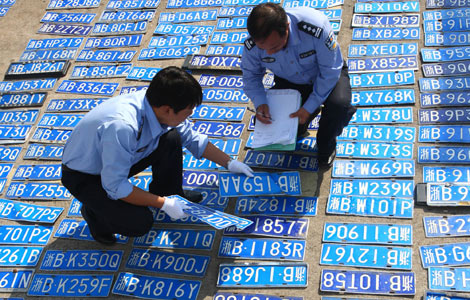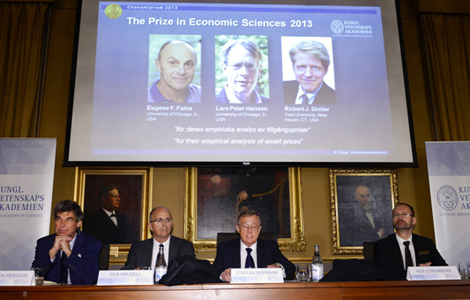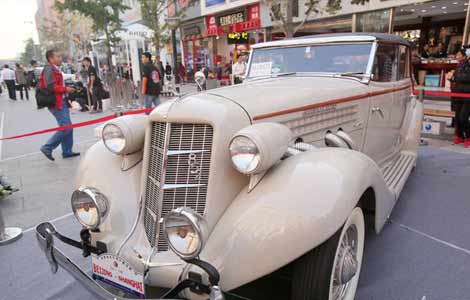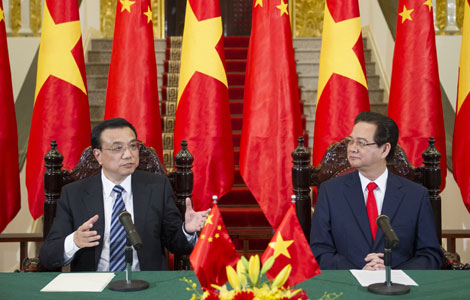Chinese scientist may have discovered the future of batteries
Updated: 2013-10-15 09:27
By Chris Davis (China Daily)
|
||||||||
Ford Motor Co and the University of Michigan just announced they would open a new $88 million battery research and manufacturing lab that they hope will accelerate a much-needed breakthrough for the stalling electric auto non-boom (electric cars accounted for less than 1 percent of US auto sales last year; hybrids 3 percent, according to the AP). And batteries are getting the blame.
One of the first persons they should talk to is Chengdu Liang, a staff scientist at Oak Ridge National Laboratory in Tennessee who was born and raised in Hunan province and came to the US about 15 years ago as a graduate student at the University of Tennessee- Knoxville, did a year of post-grad at Oak Ridge and stayed on there, becoming a staff scientist in 2006.
Since then his research has focused on the development of sustainable energy technologies. “Electrical energy storage is a very important and exciting area,” he told China Daily recently, mentioning that China Daily was his favorite newspaper through his college years in Hunan.
“A sustainable energy future lies in the harvesting of intermittent renewable energies to a stable supply of electricity,” he explained, in other words, “When the sun is not shining and the wind is not blowing, the supply of energy is drawing from massive storage of electricity.”
And that means batteries, big batteries. “Large scale storage of electricity needs advanced battery systems that are safe, low cost, and high energy-density,” Liang said.
This past summer, Liang and his team announced a major breakthrough that could have major implications for the quest for an ideal battery for electric cars, not to mention homes and hand-helds.
The secret lies in sulfur, as in lithium-sulfur. The most widely accepted technology for batteries today is lithium-ion, which is practical for consumer electronics but not for anything much bigger. “Large-scale energy storage like vehicles or the electricity grid — if you want to store energy from a solar panel or from a wind turbine — we cannot store it in a lithium-ion battery,” Liang said. “It’s too expensive.”
With today’s electric cars, he said, “one third of the price goes to the battery. If you had a vehicle and the gas tank cost one-third of the price, you would not buy that vehicle”. Same goes for a battery, he said, which is really just an energy “tank”.
Liang and his team had a hunch that sulfur held the answer.
People had been working with using sulfur as an electrolyte for years, but always dissolved in a liquid that bridged the anode and cathode, or positive and negative terminals. Liang and his team reworked the entire structure of the battery, discovered some new compounds for the elctrodes, but the major innovation was to use sulfur in its solid form.
Putting it all together, they discovered what Liang calls “the magic” of what he believes “is going to be the future of the next generation of batteries”.
“Our approach is a complete change from the current battery concept of two electrodes joined by a liquid electrolyte, which has been used over the last 150 to 200 years,” Liang said in an Oak Ridge release.
Judged by weight and density, the lithium-sulfur technology outperforms today’s conventional lithium-ion four to one.
Lithium-sulfur is also promising because the cost is so low. “It’s almost free — sulfur is an industry waste,” Liang said. “And the lithium itself is not expensive either.”
“Not only does sulfur store much more energy,” Liang said, “but a lithium-sulfur device could help recycle a waste product into a useful technology.”
Another advantage of the technology is that it does away with the need for flammable liquid electrolytes, which have caused fires on airliners recently.
And if that is not enough, the all-solid sulfur-based battery offers a solution to another problem: self-discharge. As Liang explains, when you charge up a battery and put it on the shelf, after a certain amount of time, it goes dead. In conventional electric car batteries with liquid electrolytes, you charge up your battery, drive to the airport, park and go on vacation for a week or two and come back, “unfortunately, because of self-discharge, you have to call AA”.
Liang said that so far his team has noticed no self-discharge from their design.
The new battery is still in the testing “demo” stage and a patent is pending. As for when lithium-sulfur power packs will be available to cars and cell phones, he said “we still need some improvements and engineering work … we are scientists. We are working on the very fundamental research. We solve the scientific problem then give the engineers a chance to play with that.
“What we work out is the scientific problem,” he said, and “the science question has been answered”.
Liang says that Oak Ridge National Laboratory is “a very nice place to work. I really like the scientific environment here, everything is open, we have collaborations all over the world, anyone can come here to do research.”
The folks at Ford and Michigan might do well to take note.
Contact the writer at chrisdavis@chinadailyusa.com
- Electric cars roll into Bay Area
- Global electric car sales stall despite industry's growth
- Electric car sales still sputtering
- Sparking interest in all-electric cars
- Top producers of electric cars bring their best to expo
- JAC's US electric-car deal seen as modest step
- Meet hybrid & electric cars in Shanghai auto show(B)
Most Viewed
Editor's Picks

|

|

|

|

|

|
Today's Top News
Chinese scientist may have discovered the future of batteries
UK 'open' to Chinese nuclear investment
All 86 tourists evacuated from Mount Qomolangma
Obama hopeful as meeting nears with lawmakers
Canton Fair to promote yuan use
Over 380 detained in Moscow riot
86 trapped at Mount Qomolangma camp amid snow
Going green can make good money sense
US Weekly

|

|















